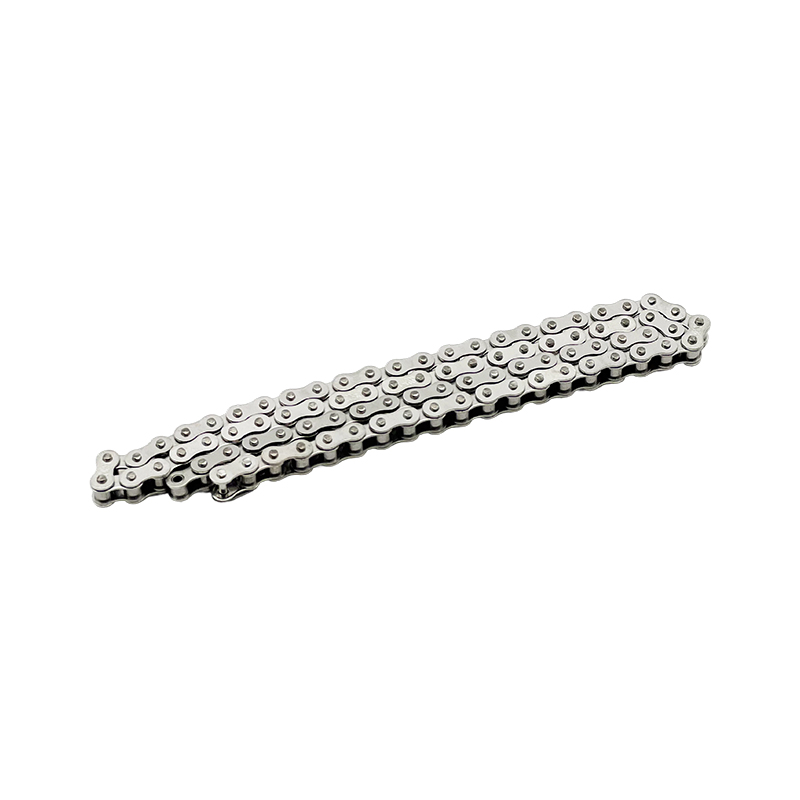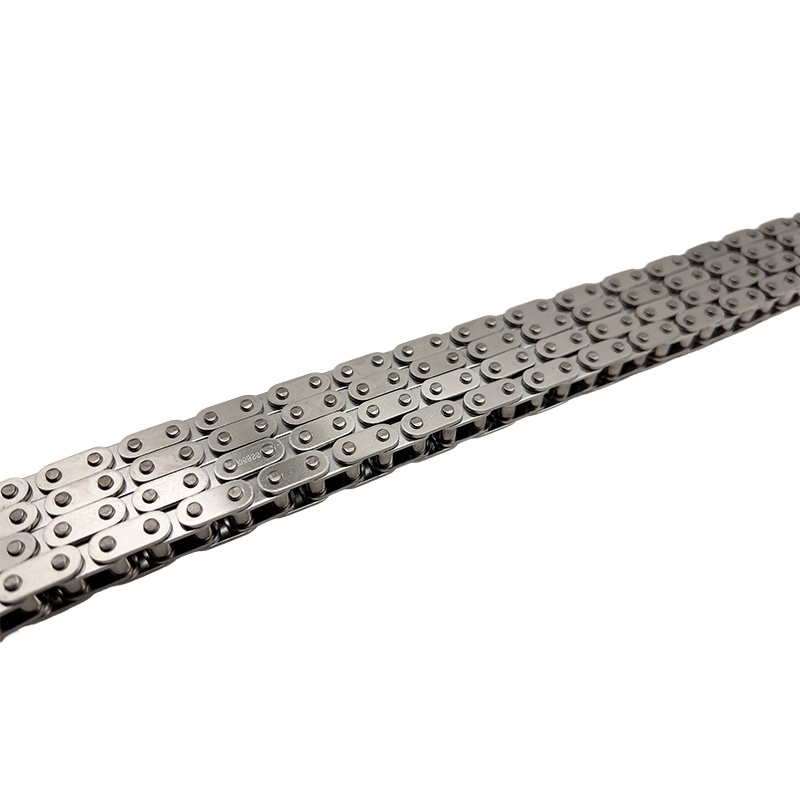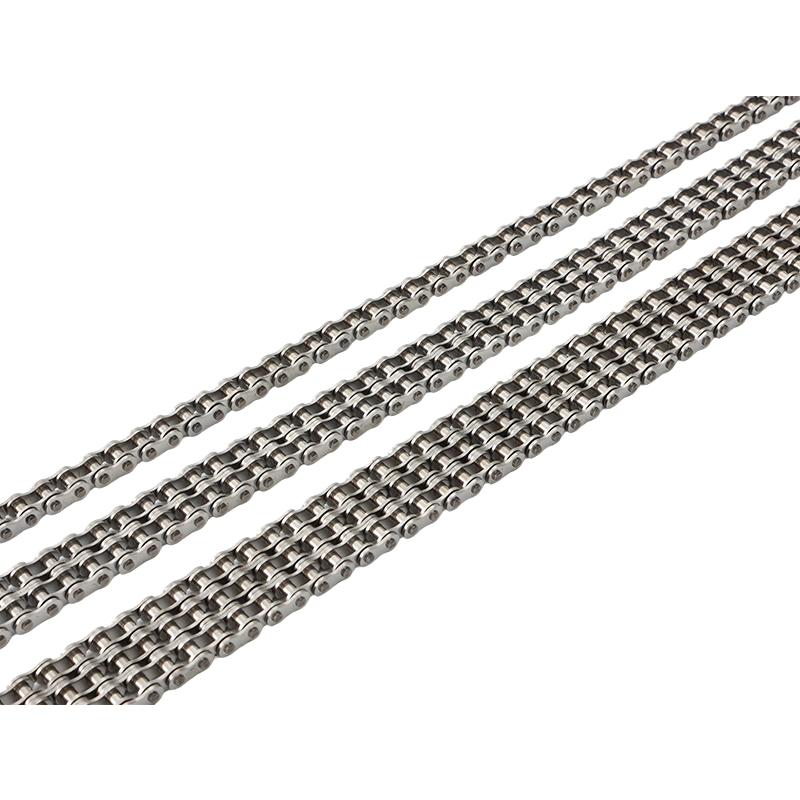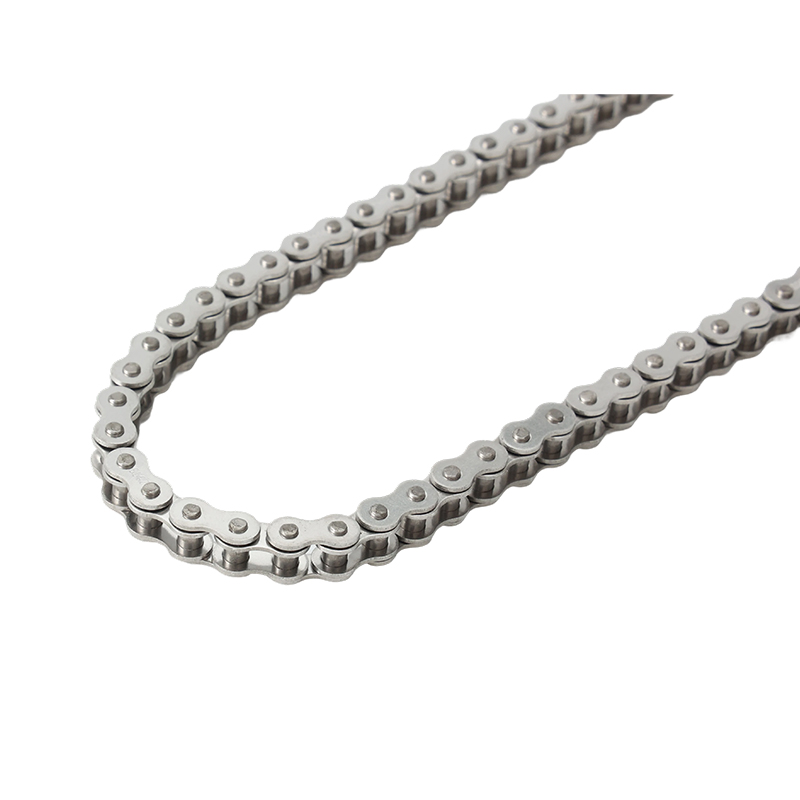How does the high strength of stainless steel 304 transmission chain ensure stable operation under heavy load conditions?
Release Time : 2025-08-06
The high strength of stainless steel 304 transmission chains enables them to maintain stable operation under heavy loads, a key reason for their widespread use in industrial transmissions. Under heavy loads, transmission chains must withstand immense tension, torque, and impact. Inadequate strength can easily lead to failures such as breakage and deformation, impacting equipment operation. The inherent advantages of 304 stainless steel provide a reliable solution to this problem.
The material's inherent mechanical properties are the foundation of its high strength. 304 stainless steel contains appropriate amounts of alloying elements such as chromium and nickel. These elements form a stable austenitic structure, imparting high tensile and yield strength. Under heavy loads, this structure effectively resists external tension and compression, preventing plastic deformation or fracture in the transmission chain due to excessive forces. Even under long-term heavy loads, the material's mechanical properties rarely degrade significantly, providing the fundamental basis for the stable operation of the transmission chain.
The uniform distribution of material enhances overall load-bearing capacity. During the production process, stainless steel 304 transmission chains utilize advanced smelting and processing techniques to ensure uniform material composition, free of visible impurities or defects. This uniformity ensures that all parts of the transmission chain bear the load evenly, avoiding stress concentrations caused by localized material weakness and reducing the risk of localized damage. When heavy loads are transmitted, the force is evenly distributed through each link of the chain, ensuring overall structural stability.
Precise structural design and high-strength material complement each other. Key components such as the links and pins of the stainless steel 304 transmission chain have been optimized, with their structural shapes more in line with mechanical principles, fully utilizing the material's high strength. The links are tightly and securely connected, and the pins and chain plates fit together with high precision, preventing loosening or misalignment under heavy loads. This structural design fully utilizes the properties of the high-strength material, ensuring the transmission chain maintains excellent integrity and stability even under heavy loads.
Excellent toughness mitigates the impact of heavy loads. 304 stainless steel not only offers high strength but also possesses a certain degree of toughness. When subjected to instantaneous impact loads, it can absorb some of the impact force through slight deformation, minimizing damage to the chain structure. This toughness cushions impact forces during heavy-duty equipment startup, braking, or sudden load changes, preventing chain breakage due to excessive rigidity. This combination of toughness and high strength makes the transmission chain more reliable under complex, heavy-duty operating conditions.
Surface hardening treatment enhances wear resistance and load-bearing capacity. The surface of stainless steel 304 transmission chains is typically specially treated to create a hardened surface layer, which not only improves wear resistance but also enhances its surface load-bearing capacity. Under heavy-duty conditions, the meshing friction between the chain and sprocket increases. Surface hardening treatment reduces wear and allows the surface to better withstand localized pressure during meshing, preventing surface damage that could compromise overall strength and extending the chain's service life.
Corrosion resistance ensures long-term high strength. In some heavy-duty environments, which may be subject to corrosive factors such as moisture and dust, the corrosion resistance of 304 stainless steel prevents rust and corrosion, preventing material degradation and strength loss due to corrosion. Even under long-term use in harsh environments, the chain's structural integrity and mechanical properties are remarkably maintained, ensuring its high strength properties are not compromised by corrosion, thus ensuring continued stable operation under heavy loads.
This long-term performance stability ensures heavy-duty reliability. Under long-term heavy loads, the stainless steel 304 transmission chain exhibits slow mechanical degradation and structural stability. After repeated heavy-duty cycles, the chain exhibits minimal elongation and minimal wear at the connections, maintaining excellent transmission accuracy and load-bearing capacity. This long-term stability ensures the long-term reliable operation of the stainless steel 304 transmission chain in heavy-duty equipment, reducing downtime and maintenance due to chain failures and improving equipment efficiency.







